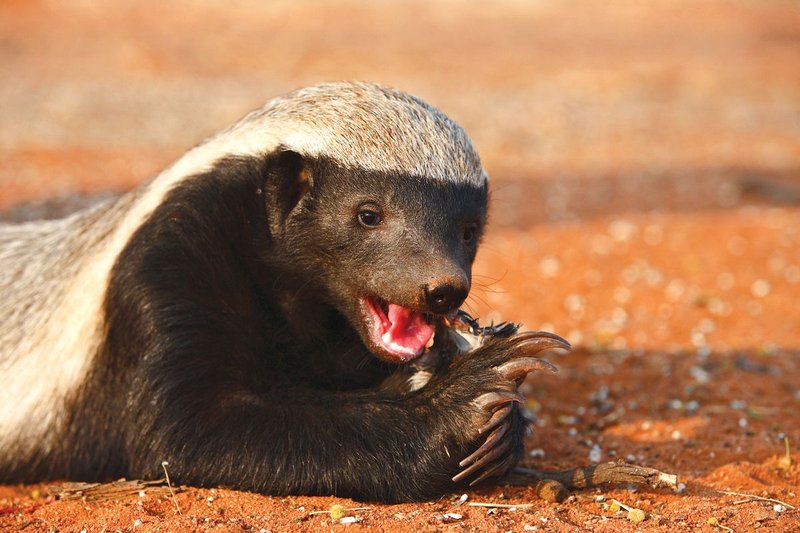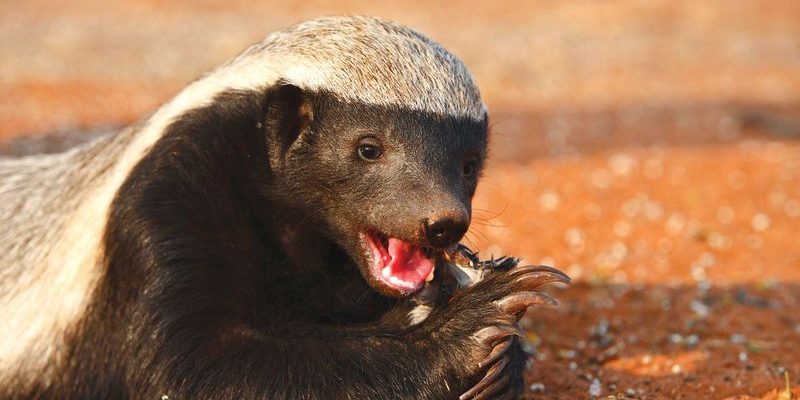
Honey badgers are mostly found in Africa, but their range extends into parts of Asia and the Middle East. They inhabit a variety of environments, from savannas to desert regions. Their adaptability is key to their survival. So, how do these creatures manage to live in such difficult places? Here’s the thing: honey badgers have evolved a unique set of skills and traits that make them incredibly resilient. Whether it’s their fierce determination or their clever hunting tactics, these badgers have got survival down to an art.
Exceptional Adaptability
One of the most impressive features of honey badgers is their adaptability. Imagine moving into a new neighborhood where everything is unfamiliar. You’d need to figure out the best way to thrive, right? Honey badgers do just that in their environments. They can live in a range of habitats such as grasslands, forests, and even mountains, showcasing an exceptional ability to adjust to varying conditions.
These animals have a diverse diet, which helps them adapt swiftly to different circumstances. They’re known for eating everything from insects and small mammals to fruits and roots. Being opportunistic feeders means they’re not picky—they’ll eat what they can find. So, if food becomes scarce in one area, they simply shift their hunting strategy or location.
Moreover, their thick skin plays a significant role in their survival. This tough skin protects them from stings and bites, particularly from bees and snakes. Imagine wearing armor that allows you to withstand attacks while you raid a beehive for honey. That’s how honey badgers tackle life’s challenges!
Fierce Determination
You might be wondering, what sets honey badgers apart when it comes to their attitude? It’s their fierce determination. These creatures are known for their bold behavior and will take on animals much larger than themselves, like lions and buffaloes. It’s as if they have an internal compass that drives them to face danger head-on.
When honey badgers are threatened, they don’t back down. Instead, they stand their ground and exhibit a fearless demeanor that can be intimidating. This can be surprising because their small size often leads people to underestimate them. They may look cute and cuddly, but they’re truly a force to be reckoned with. Their bravery allows them to hunt and defend themselves against predators, ensuring their survival even in the most hostile environments.
It’s not just their bravery that helps them survive, though. Their intelligence plays a crucial role too. Honey badgers have been observed using tools to get what they want—like rolling rocks to break into a hive. This cleverness aids them in finding food and negotiating tricky situations that could otherwise spell disaster.
Cunning Hunting Skills
Think about a time when you really wanted something, and you had to think outside the box to get it. Honey badgers do the same with their hunting skills. They’re not just hunters; they’re master strategists. With a knack for digging and a keen sense of smell, they are excellent at locating underground prey such as rodents and insects.
Honey badgers also know how to exploit their surroundings. For example, they often raid the nests of birds and beehives. Their thick skin protects them from bee stings, enabling them to feast on honey and larvae. You can picture them as the daring adventurer who isn’t afraid to delve into the unknown for a delicious reward. This behavior not only provides sustenance but also showcases their fearless nature.
Their hunting tactics can change depending on the environment they are in. In some regions, they’ll climb trees to reach birds’ nests, while in others, they dig aggressively for food. This versatility is fundamental to their ability to thrive in challenging habitats.
Social Behavior and Communication
While honey badgers are often seen as solitary creatures, they do have a unique social behavior that aids in their survival. They may form temporary groups during feeding or when raising young, showcasing a cooperative side that many people don’t expect from such fierce animals. This social interaction helps them find food more efficiently and can offer protection against larger predators.
Their communication methods are intriguing too. Honey badgers have a range of vocalizations that they use to express themselves. From hissing sounds when threatened to growls during confrontations, these vocal signals relay important information to other badgers. It’s like having a conversation in the wild that helps them navigate the challenges they face.
Additionally, their keen senses of smell and sight assist them in detecting danger. They can sense predators approaching, which allows them to react quickly. This level of awareness is crucial in their fight for survival, especially in areas where they share space with larger, more dangerous animals.
Resilience in Harsh Conditions
You might think of resilience as something you’re either born with or not. But for honey badgers, it’s all about how they’ve learned to cope in harsh environments. These creatures inhabit some of the most unforgiving landscapes, from scorching deserts to arid savannas. Their ability to endure extreme temperatures, both heat and cold, is remarkable.
To deal with the heat, honey badgers often become more active during the cooler parts of the day, like early morning or late evening. This behavioral shift helps them avoid the sweltering sun while they hunt for food. Conversely, when it’s cold, they will burrow into the ground or find shelter in rock crevices to stay warm. Picture this as a strategic retreat to ensure survival in adverse weather.
Their resilience doesn’t stop there. Honey badgers can also tolerate certain toxins that would be harmful to other animals. For example, they can eat venomous snakes and not suffer the same fate as other creatures. This ability means they have fewer competitors for food, allowing them to thrive in environments where other animals fail to adapt.
Honey badgers are an incredible testament to the power of adaptability and determination in the wild. Their unique combination of fierce behavior, clever hunting skills, and resilience allows them to survive in some of the toughest environments on the planet. If you ever find yourself feeling overwhelmed, just think about the honey badger—a small creature facing adversity with courage and ingenuity.
In a world full of challenges, we can take a page from the honey badger’s book. Embrace your inner fighter, adapt to your circumstances, and never underestimate the power of persistence. After all, in the wild, as in life, it’s not always the biggest or strongest that survives, but rather the most clever and determined.

